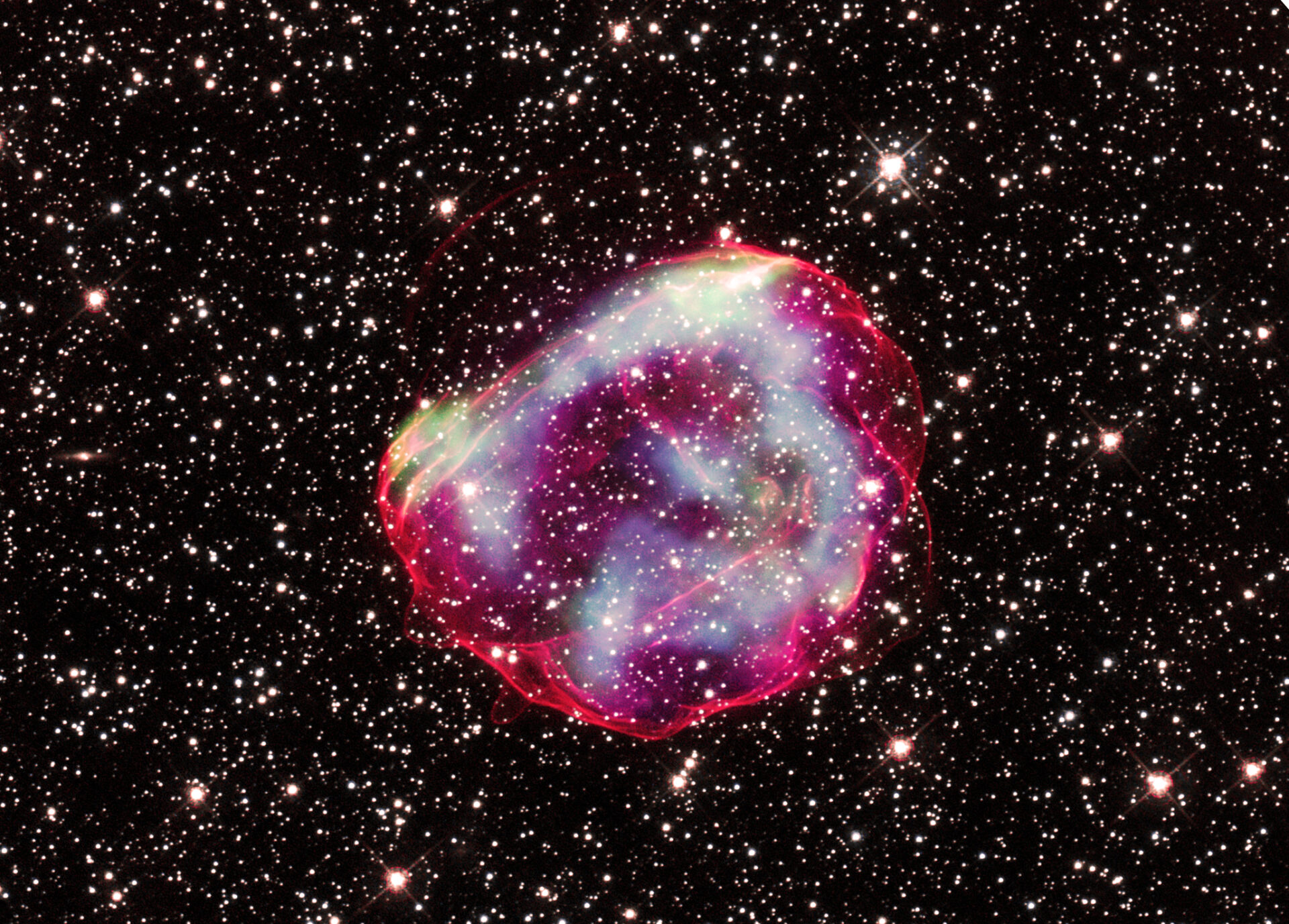A team of American astronomers has managed to determine the approximate age of the supernova remnant SNR 0519 in the Large Magellanic Cloud. Data from the Chandra, Hubble and Spitzer space telescopes helped them in this.

The supernova remnant SNR 0519 is located at a distance of 160 thousand light-years from Earth. It is an expanding shock wave consisting of ejected stellar material, as well as compressed matter of the interstellar medium. It was formed as a result of the death of a white dwarf, which absorbed too much of its companion’s matter and was destroyed by a thermonuclear explosion. Since approximately the same amount of energy is released during such events, astronomers use them as standard candles to determine the distances to objects in the Universe.
A team of American researchers set out to determine the age of SNR 0519. For this, they turned to the images of the Hubble and Chandra telescopes, as well as the archive of the Spitzer mission. Comparing photos of SNR 0519 taken in different years, they determined that the remnant is expanding at a speed from 1700 to 2500 km/s. If we count by the upper limit, then the light from the supernova flash should have reached the Earth around 1350. At that time, France and England were waging a Hundred Years’ War, an epidemic of the “black death” was raging in Europe, and the builders completed the construction of the Leaning Tower of Pisa.
At the same time, there is a possibility that the material ejected during the explosion slowed down due to interaction with the matter of the interstellar medium and the supernova is younger than it seems. Data from Chandra and Spitzer confirm this assumption. Astronomers have discovered that the brightest parts of the supernova remnant in X-rays are located where the slowest moving material is located. At the same time, the fastest sections of the shock wave do not produce X-rays. This suggests that part of the supernova remnant crashed into the dense gas clouds surrounding the system, which led to a decrease in its expansion rate.
Earlier we talked about how astronomers photographed the remnant of the first documented supernova in history.
According to https://www.nasa.gov
Follow us on Twitter to get the most interesting space news in time
https://twitter.com/ust_magazine
